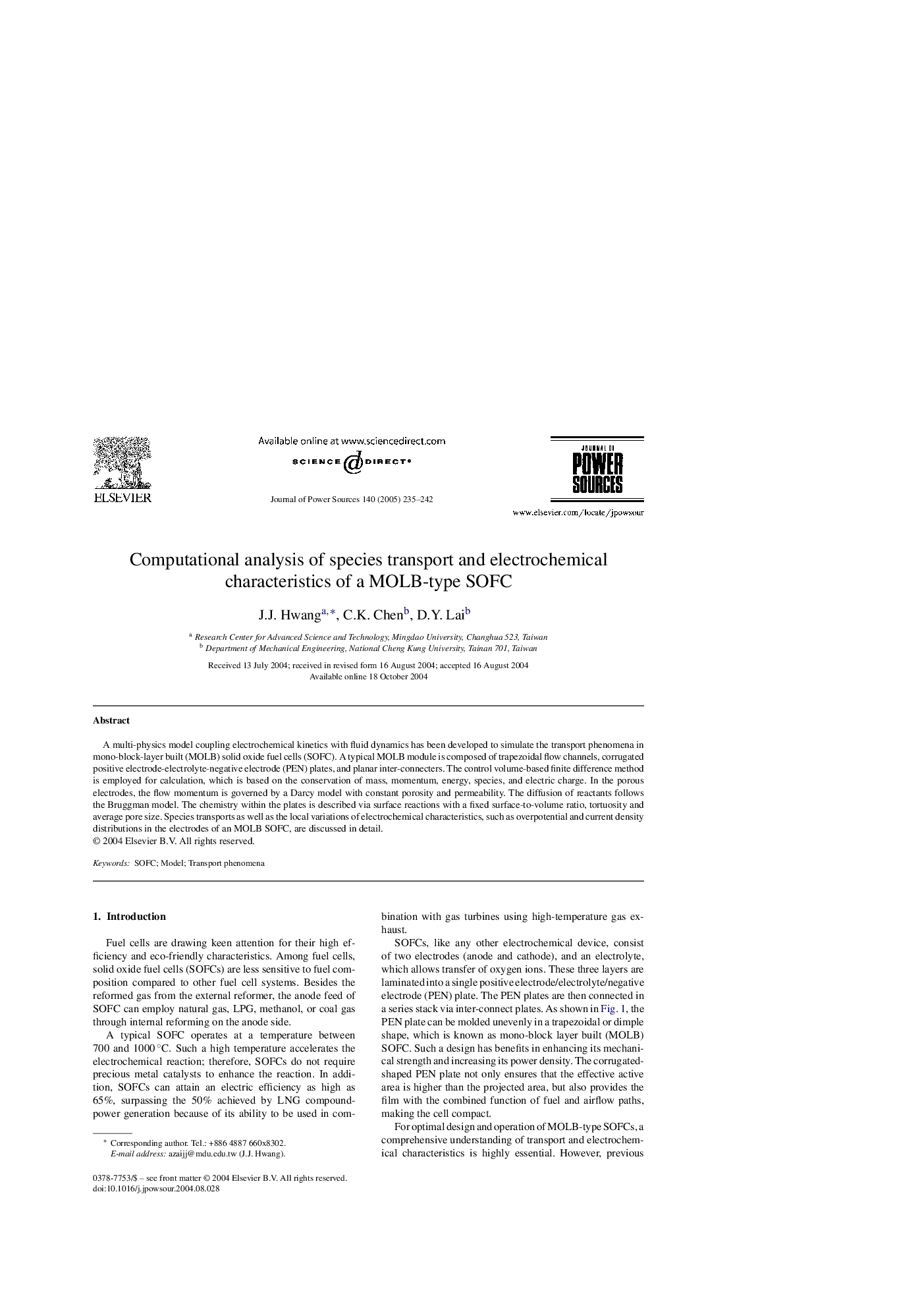| Article ID | Journal | Published Year | Pages | File Type |
|---|---|---|---|---|
| 9760461 | Journal of Power Sources | 2005 | 8 Pages |
Abstract
A multi-physics model coupling electrochemical kinetics with fluid dynamics has been developed to simulate the transport phenomena in mono-block-layer built (MOLB) solid oxide fuel cells (SOFC). A typical MOLB module is composed of trapezoidal flow channels, corrugated positive electrode-electrolyte-negative electrode (PEN) plates, and planar inter-connecters. The control volume-based finite difference method is employed for calculation, which is based on the conservation of mass, momentum, energy, species, and electric charge. In the porous electrodes, the flow momentum is governed by a Darcy model with constant porosity and permeability. The diffusion of reactants follows the Bruggman model. The chemistry within the plates is described via surface reactions with a fixed surface-to-volume ratio, tortuosity and average pore size. Species transports as well as the local variations of electrochemical characteristics, such as overpotential and current density distributions in the electrodes of an MOLB SOFC, are discussed in detail.
Keywords
Related Topics
Physical Sciences and Engineering
Chemistry
Electrochemistry
Authors
J.J. Hwang, C.K. Chen, D.Y. Lai,
